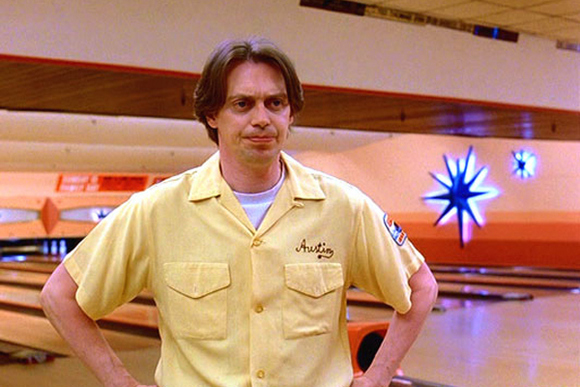Christ, look at that beard! That's the sort of thing that exemplified high society in the 19th century; now it exemplifies the face behind your espresso (especially in combo with the glasses). I keed, I keed. That is Georges Bizet, renowned French composer of the mid-19th century, and the composer of "L'Arlésienne" ("The Girl from Arles"), which is an opera set in the south of France and which features, as its finale, "Farandole," the subject of today's post. I'm going to offer the disclaimer now that by electing to examine a piece of baroque music I'm already pretty far out of my element. So cut me some slack if my explanations/analyses are pretty shallow compared to, say, someone who knows what the hell they're talking about.
That face you make when you know you're out of your element
Story time: I heard "Farandole" for the first time when I was around 13 years old on my parents' Boston Pops Orchestra Christmas album. I remember liking it because it sounded regal, downright imperial, even, especially to a teenage kid far too into military history for his own good. Even now, when I listen to it, it brings to mind the same themes as "The 1812 Overture," except that that piece is actually about the Napoleonic Wars. This one just sounds like it ought to be, at least in the beginning. The reality, unfortunately for my imagination, couldn't be more different.
First off, a farandole is a type of folk dance popular in the south of France, in which everyone holds hands in a circle or chain and skips to the beat, alternating left and right, in a kind of waltz-type motion (honestly I have no idea). Apparently it's still a fairly common thing to do at weddings in the region of Provence. So that's Bizet's theme for the final movement of the second suite of his opera. Great! How does that have anything to do with Christmas?
As it happens, the first movement of the first suite of L'Arlésienne ("Prelude") features the same musical theme as "Farandole" at it outset, which is based on "March of the Three Kings," a (supposedly) medieval Epiphany carol also originating in Provence. Have a listen to it, in comparison with "Farandole":
You get the idea. What Bizet does is take that Christmas carol and intertwine it with a tune with which you could dance a farandole, and that combination makes up the finale for his opera. But why those two things? That requires reading a little bit into the story being told in L'Arlésienne. One of the main characters from the outset is Balthazar, described as being an old shepherd in the opera. If you know your biblical history you know that Balthazar was one of the three kings, the Magi, who followed the star in the east to Jesus' bedside, arriving on the day known Epiphany. Somehow, over the course of the drama, he manages to woo "the girl" (being the namesake of the opera) and runs off with her. Who knows why Balthazar was in southern France, watch "The DaVinci Code" or something. The important thing is that we all get a triumphant Christmas overture out of it all, which is admittedly invigorating, and (unlike L'Arlésienne itself, which was basically a flop) a deservedly widely-played piece from a relatively unknown composer.

This comment has been removed by the author.
ReplyDeleteI am happy to find this post Very useful for me, as it contains lot of information. thanks Double Dhamaka offer | Men's fashion accessories
ReplyDelete